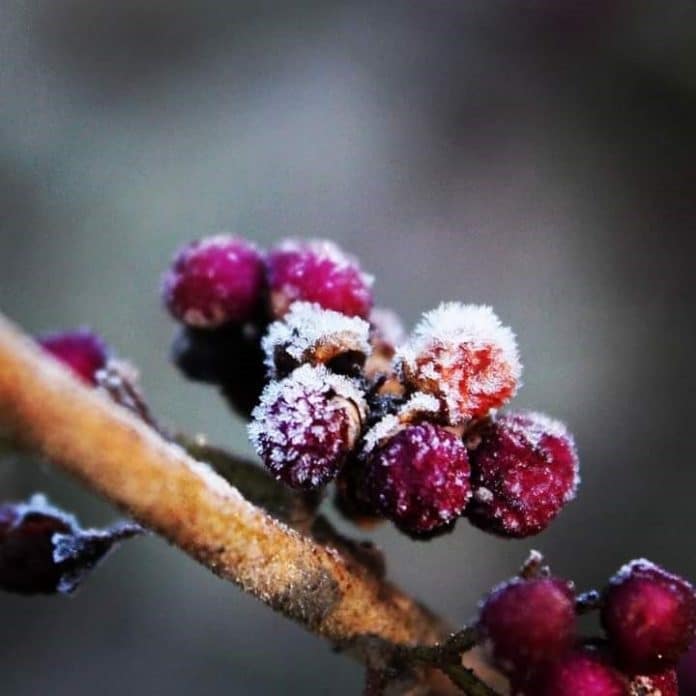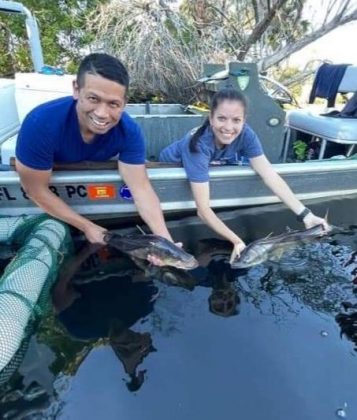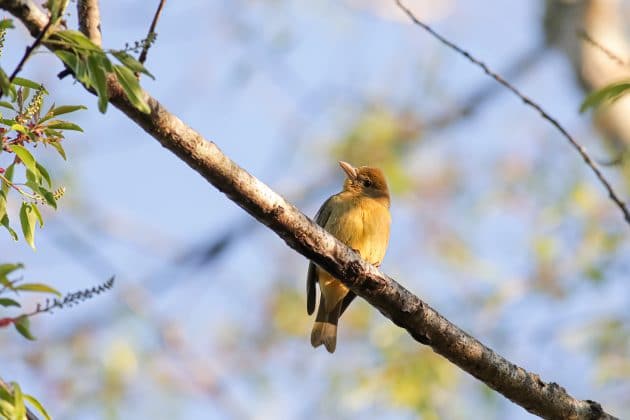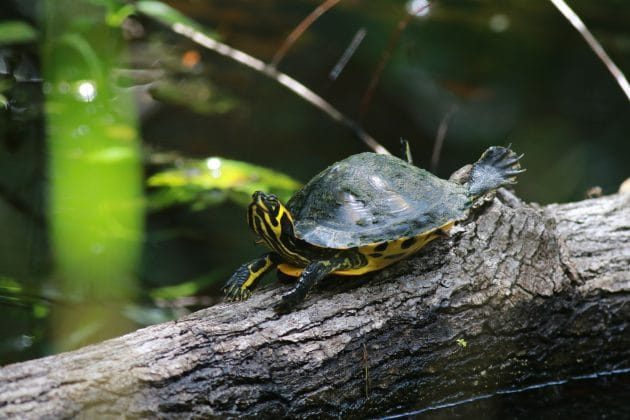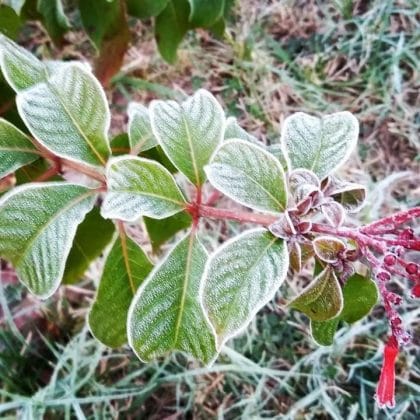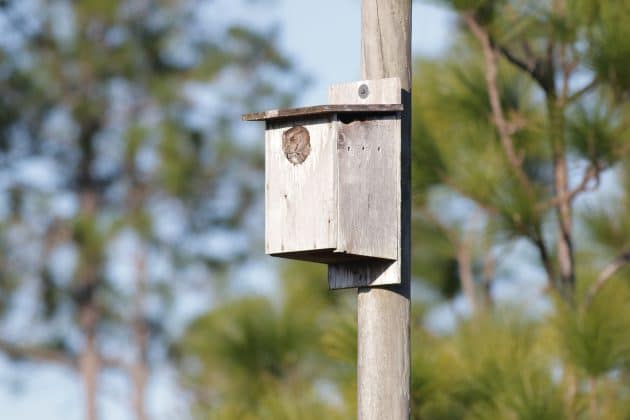If you’re a Florida Native or have lived in Florida for more than five decades, you surely may agree that anything under 65 degrees is too cold! It’s pretty easy for people to respond to the cold by adding layers of clothing, but how does nature respond?
Every wildlife species and even plants adapt to their natural environment, and they have done so for millions of years. All organisms have evolved to survive nature’s ever-changing elements, including the way mammals insulate and fluctuate their body temperature and how plants become dormant.
Luckily for wildlife living in Florida, they don’t have to deal with temperatures below zero degrees, but still, the weather gets pretty chilly enough to have frost-covered ground.
How wildlife adapts to nature’s ever-changing seasons depends on two determining factors, if they are warm-blooded or cold-blooded.
During the spring and fall seasons, warm-blooded wildlife like the Florida black bears, white-tailed deer, eastern cottontails, bobcats, fox squirrels, coyotes, possums, river otters, Florida mice, racoons, gray foxes will eat more during the fall to build up their metabolism in order to store fat before winter.
While mammals are not as active during the winter months, they still need to save as much energy as possible. The more roaming and environmental stresses they endure, the more they can lose vital energy. Mammals with fur may shed their fall coats and grow thicker coats for the winter. Coyotes, foxes, black bears, armadillos, and other species of wildlife that build dens will hunker down until the weather warms up. Bats (Yes, bats are mammals!) stay warm together, literally huddling together by the hundreds.
Birds have unique behaviors to warm themselves during the winter season. Songbirds will collect and store food, like seeds and insects, keeping them hidden in the crevices of tree bark.
Cavity nesting birds like woodpeckers will stay warm in a tree hole insulated with leaf debris, and other birds may use nesting boxes. Like owls and herons, larger birds hunker down during the chilly nights in larger tree holes to keep warm. Like crows, some birds will line up on power lines and a few species of birds will even grow extra down feathers.
Birds are able to maintain their body temperature by shivering. This shivering movement activates their muscles by creating muscle contractions. That process helps them warm up.
Mammals in the northern states may hibernate for months and some birds migrate to Florida. The temperature outside may be chilly for Florida’s native wildlife, but to others, getting out of the frigid northern weather can be worth the travel.
Reptiles and amphibians are cold-blooded and have evolved over millions of years. Their evolution to surviving during the winter is basically about thermoregulation, but not in a way mammals do. Reptiles and amphibians are ectothermic, meaning they have to draw from their external environment and adapt to maintain an adequate body temperature.
One common method lizards, turtles, snakes, alligators regulate their body temperature is by basking, and who doesn’t love feeling the warmth of the Florida sun! If you see turtles basking on a log with their feet stretched out, that’s what they are doing, soaking up the sun through their feet.
Snakes conserve energy through a process called brumation. It’s a way snakes can slow down their metabolism to preserve energy by limiting their movement. Snakes will hide out in their dens or under hollow logs or a pile of fallen leaves.
Spiders and insects can produce “antifreeze” inside their bodies. This “antifreeze” is a chemical to help stop ice crystals from forming in their bodies. Monarch butterflies may migrate south, other insects like beetles hide under fallen logs or bury themselves in the dirt.
Winged insects that do not migrate will shiver like birds. They will move their wings super fast which helps them warm up their body temperature. Yet many insect species will not make it through the winter season.
Florida Flora
Lilly Browning from the Hernando County Utilities Department
Florida-Friendly Landscaping™ Program Coordinator
It is sometimes assumed that Florida has green, lush plants that never freeze back or lose leaves. This, of course, is not the case in Central and North Florida.
We do experience a winter season and the plants respond to that season. Even if it is warm outside, trees, lawns, and other plants respond to the shorter daylight hours by slowing down their growth. We have several deciduous trees and bushes that will shed their leaves. Some of them may even bring us beautiful colored leaves, but generally after Christmas, not in autumn. Crepe Myrtles, Sycamores, Turkey Oaks, Bald Cypress, and others all lose their leaves in the cooler months, giving us a sense of wintertime.
In Hernando County, we are bound to experience one or more freezes in the winter months. Many factors will determine how our landscape plants will respond to the freeze. Here are a few of them:
Acclimatization: If we have been getting cooler on a slow, steady basis the plants are able to acclimatize to the increasingly cooler weather. This process involves cellular changes and sugar concentrations, allowing the cells to “harden off” and be prepared for the cold. Anyone who has lived in Florida for any length of time knows that this rarely happens. Our cold fronts come and go quickly, usually on the heels of some very warm weather.
Potted or in-ground plants: Our soil temperature is not likely to get much lower than 50 degrees in a freeze event. The roots of our in-ground plants will likely fare just fine, even if the plant itself is frozen to the ground. You can expect that plant to re-grow. Plants in pots don’t have warmer soil to protect the roots. They are more likely to experience root damage in cold weather. Either bring the potted plants into the house, your garage or huddle many potted plants together near the house and cover them.
Micro-climates: Buildings and trees create warmer areas than open spaces. You may be a little higher in elevation than your neighbor. You may have more southern exposure than your friend down the street. Each of these micro-climates will affect the temperature in that exact area, and the plants in that area.
Right plant – right place: Our horticultural zone is 9a. If you have tropical plants zoned for 10 or 11, you will need to take steps to protect those plants. Some tropical plants can become damaged with temperatures in the 40s. Plants native to our area have grown here for millennia and are well-adapted. The plant may suffer cold damage, or even freeze to the ground, but it will recover and return.
Healthy plants are cold hardy plants: If your plant is in the right place and is not stressed by other factors, it is more likely to come through a cold event with at least the roots unharmed.
Plant protection: Once you know a cold front is coming, it is a good idea to water the soil below your plants several hours before the temperature dips. The good part about this is that nature usually does that for us, in the form of rain which ushers the cold fronts in and out. Don’t turn on your automatic irrigation system to do this if it is not your watering day. Hand water your bedding plants if it hasn’t rained.
If you decide to cover your sensitive plants, keep these things in mind:
Don’t create lollipops from your plants. You need to capture the radiant heat from the ground. Wrapping your plant without creating a tent effect to keep the ground heat in, accomplishes nothing.
The ideal situation is that the covering acts as a tent and doesn’t touch the plant at all.
If that is not possible, drape the cloth over the plant and make sure it reaches the ground.
Use cloth, not plastic. For smaller plants, use boxes to cover them.
Keep the covers weighted down.
Take the covers off as soon as the temperatures warm up. Your plants need sunlight!
If you have cold-damaged plants, keep the frozen leaves on the herbaceous plants until mid-March. If we have another cold front, the dead portions of the plant will protect the tender new growth.
Avoid pruning in general until mid-March. You can prune deciduous and hardwood trees in the winter months. Be careful of the spring bloomers. Those should be pruned by June 30th if you want to see the spring flowers. Avoid fertilizing in the winter, as that also encourages new growth, which is very susceptible to cold damage.
Remember, we may be in Florida and can enjoy many days of sunshine, but we are not in the tropics and we have a winter season. It is okay for your yard to look like winter! Golden lawns and sleeping plants are a normal part of our Florida cool season.
Aquatic Life
Brittany Hall-Scharf, Marine Agent III
UF/IFAS Extension Hernando
Now we discover how those cold-blooded aquatic creatures survive in the cold waters. Weeki Wachee Springs is consistently 72°F year-round and is suitable for many aquatic animals. However, temperatures may differ in a lake or in the ocean.
Most fish are cold-blooded animals and do not have a way to warm themselves up. Like their land counterparts, fishes tend to be less active during the cold winter months and have a temperature range best suited for them. Heat loss occurs more rapidly in water than in air, and just a few degrees can mean life or death for the fish. Fortunately, some fishy tricks help them to survive the cold.
When the temperature dips too low, fishes living in saltwater can choose to migrate or hunker down. Some fishes will travel long distances to find warmer water that suits their metabolic needs, while others move to deeper waters nearby.
For example, shallow flats are affected by constant changes in wind, temperature, and tides making fish in these areas especially vulnerable to harsh winters. Frequently these shallow flats can be left fully exposed during the winter months, driving the fish to find somewhere else to hide. Spotted seatrout, a fish species that often relies on shallow seagrass flats, will relocate to deeper holes, channels, or grass flats in search of warmer water. Only when the sun warms the shallow waters will the fish return.
In the spring-fed region of the Big Bend, the common snook has a different approach for hunkering down when the seagrass flats become shallow and cold. Constant year-round water temperatures flowing along spring-fed rivers also provide a location for thermal refuge to both the common snook and Florida’s iconic manatees.
Sea turtles are another cold-blooded species affected by dips in water temperatures, typically when water temperatures drop below 50°F. Because they cannot regulate their body temperature, sea turtles will become lethargic and inactive when exposed to cold temperatures during the winter months; A condition that’s often referred to as cold-stunning. Most sea turtles prepare for chilly temperatures by migrating south or to deeper waters offshore. Because sea turtles are a protected species, it is recommended that you contact a local government agency or rehabilitation center that is permitted to care for them.

